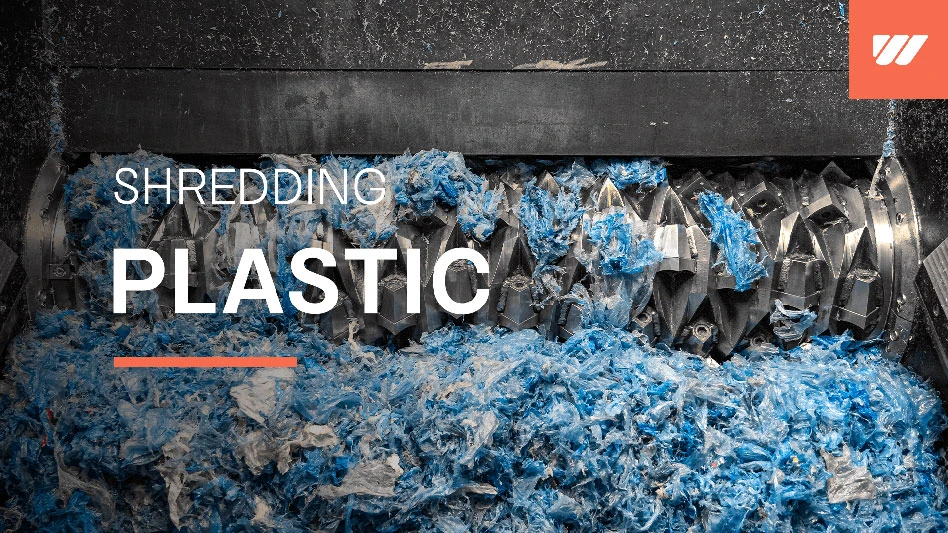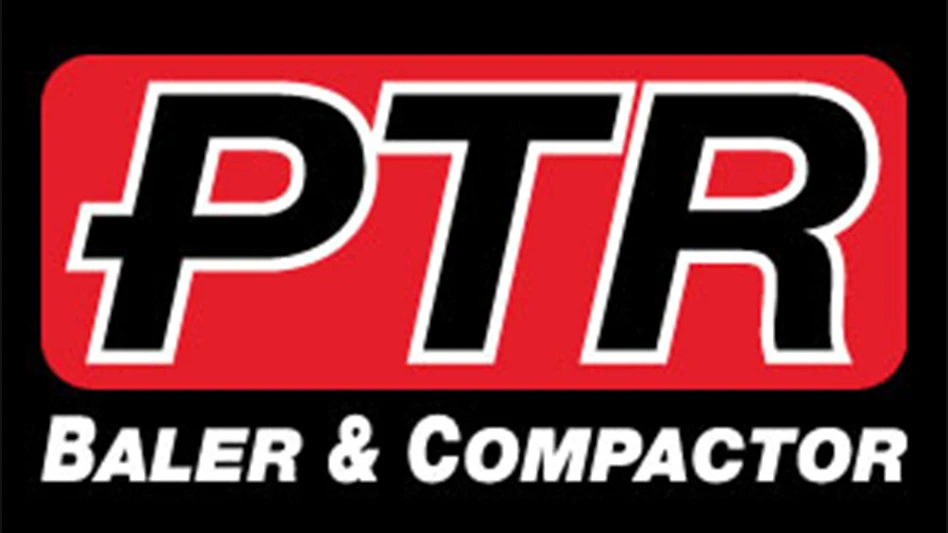Sometimes a strong marketing program can result in opening new offshore markets for recycled materials. Sometimes all it takes is change in another nation’s weather. In other cases, the world market becomes less significant as domestic demand rebounds.
Worldwide movement of recycled materials is commonplace today. However, the direction and types of product moving vary from year to year and from port to port.
The figures, even from a single location like the Port of New York/New Jersey’s customs district, are impressive. For the first 10 months of 1997, according to numbers gathered by Ed Sasportas in the Port’s marketing department, the value of scrap exports was more than $452.8 million. That figure was up substantially over the $394.8 million figure from the first ten months of 1996.
The leading export through the Port was iron and steel scrap, valued at over $169 million through October 1997. Nonferrous scrap and slag was right behind at $131 million. Both were up in dollar value when compared to 1996, although the actual tonnage of nonferrous exports was about 5,000 tons less than 1996.
Both the tonnage and dollar value of glass containers were up substantially, at 17,000 tons worth over $80.3 million through October 1997, versus 9,950 tons worth $42.2 million for the same period in 1996. However, scrap paper exports were down, both in dollar and volume terms. About 913,000 tons of paper worth almost $90 million moved in 1996, versus 735,000 tons worth just over $72 million in 1997.
“Export has strong years, and not-so-strong years,” says Chaz Miller, recycling manager with the Environmental Industries Association, Washington, D.C. “It’s mainly a function of who needs material the most and who is willing to pay for it.”
A crop failure in China bolstered the PET plastics market while a rebound in the domestic steel industry has undercut the need to move ferrous scrap to distant ports.
While exports through the Port of New York/New Jersey grew, imports were a mixed bag. Glass and iron did well while nonferrous and rubber suffered losses. However, the tonnage is small on specialty items like rubber and a couple of cargoes can loom large in the statistics. Glass containers were the overwhelming leader, both in terms of dollars and tonnage. Through October of 1997, more than 118,400 tons of glass—valued at $391 million—moved into the United States through New York. That is 14,400 more tons and $24 million more than came into the country in 1996.
While 1996 saw hardly any iron and steel scrap come into New York, 19,000 tons worth almost $2 million had been imported by October 1997. Import of nonferrous scrap and dross plunged from 10,350 tons to just 3,880 tons worth $11 million, while rubber scrap was off precipitously from $72 million in 1996 to just $2.5 million in 1997, according to Sasportas’ figures.
WEST COAST FIGURES
On the West Coast, the tonnage of exported scrap outweighs imports by more than 10 to one. Statistics from the Port Import-Export Reporting Service (PIERS) database for the period from January to September 1997 show that slightly more than three million metric tons of recyclable scrap moved through the Ports of Los Angeles-Long Beach.
Although shippers and recyclers generally look at Los Angeles and Long Beach as one port, they actually are separate. “We look at each other as friendly competitors,” says Matt Plezia, trade analyst for the Port of Long Beach.
South Korea was the leading destination for exports from Los Angeles and Long Beach. 963,800 metric tons moved to South Korea. Almost that entire sum was divided between metal scrap, primarily iron; and paper products, including paperboard and newspaper. Roughly 10,000 tons of aluminum rods, forgings and other scrap went to South Korea, according to figures generated by Plezia. Plastics were not included in the data.
The People’s Republic of China was second, with 574,457 tons shipped there. Of that, 336,000 tons were paperboard, 94,000 in ferrous metal scrap, 92,000 in newspapers and 47,700 in mixed metal. Taiwan took 325,000 metric tons of scrap, and again paper and paperboard were the leading commodities, at 203,514 tons. Various metals, including ferrous, aluminum and mixed scrap rounded out the purchases.
Japan received 259,366 tons of recyclables, and almost all of that (224,000 tons) was in paper and paperboard. Fifth on the list was Hong Kong with 208,000 tons of scrap with paper and paperboard leading the list at 130,000 tons, followed by mixed metal scrap at 37,000 tons and ferrous material at 30,325 tons.
With so much paper being exported from the West Coast, it is something of a surprise that paper and paperboard also represents the largest single category of recyclable scrap imported through Los Angeles-Long Beach. In fact, four of every five tons of scrap material imported from the five largest trading partners is paper or paperboard. Occasional cargoes of metal scrap make up the rest.
So much material is moving globally these days that it is has attracted the attention of governments at the highest levels. In late January, the United States hosted a meeting of the G-8 nations (the G-7 industrialized nations plus Russia) to generate ideas on increasing cooperation among countries, especially on notification of illegal or regulated materials. Nobody, it appears, wants another garbage barge plodding around the globe.
Results of that meeting will feed into sessions scheduled for early April in Great Britain on environmental crime and illegal shipments of waste. At the top of the pyramid is the full summit slated for May 15-17 in Birmingham, England. While environmental issues will be only a small part of that meeting (it will also cover computer crime and other international high-technology concerns), look for movement of scrap to at least get some exposure on the docket.
CANADIAN TRADE
Although the U.S. has signed the Basel Convention, the government has not yet ratified it, notes Len Shaw, director of public and government affairs with the Canadian Association of Recycling Industries (CARI), Ottawa. However, that has not slowed Canadian-U.S. trade in recyclables, he says. One reason is the existing trade agreement between the nations. Another is simple proximity of the markets.
About 86 percent of the total tonnage and 87 percent of the dollar value of recycled materials moving across Canada’s borders goes no farther than the United States.
“There has been steady growth in that trade,” Shaw says, referring to figures from Natural Resources Canada. “When you take out the trade with the United States, there is not much left for other nations.”
From British Columbia, some material traditionally is shipped to Asian countries when their economies are strong. A bit of material moves up the Saint Lawrence to Europe. But most goods move north-south, across the border.
Metals make up the bulk of the trade. Shaw notes that most metals markets function within a radius of 500 miles. Material may move between Hamilton and Buffalo, first as scrap, then as steel, then as galvanized and finally as a product . . . only to be recycled again when the end-product life cycle is completed.
PET’S STRONG SHOWING
Among those markets riding the crest of the export wave from the U.S. is the post-consumer PET plastic market. In 1994-1995, the offshore movement of PET was stimulated by a miserable cotton crop in China two years running. Two years ago in the United States, an over-capacity of virgin production drove the price for recycled material to depressing levels. While the domestic market for PET was in the doldrums, the Chinese discovered that they could make a good quality fiber from PET and began to buy serious tonnage. In its scramble to find feedstock for its booming textile market, China found that PET was a product that would work. While there are about 50 products that can be made from recycled PET resin, the fiber market is the fastest growing, both domestically and abroad.
As 1997 ended, the domestic market had rebounded nicely. Still, the export market was booming. “Virtually all of the bottles are going to China for recycling into fiber,” says Luke Schmidt, president of the National Association for Plastic Container Recovery (NAPCOR) in Charlotte, NC. The demand for fiber, both for clothing and for carpet production, remains strong.
Shipments of PET to China mainly come out of the West Coast’s ubiquitous curbside recycling programs. The Port of Seattle and the Port of Oakland are the major focuses for shipping PET to China. Bottles are baled and loaded into container ships and move to China in baled form, Schmidt explains.
Coupled with the China demand and the resurgence in the domestic market, the price for post-consumer PET, nationwide, has rebounded to the 8-12 cents a pound range and continued to climb in early 1998.
The Canadian market moves some plastics to Asia, but not a lot. Some people from Hong Kong have attempted to develop relationships with suppliers in Western Canada. But to date, there has been no flood of material out of Western Canadian ports.
Two questions remain: will a recovery of the cotton crop in China cut into their demand for PET? Will the Chinese balk at the price increases caused by a settling of the virgin market in the U.S.? While NAPCOR does not deal with prices, Schmidt notes that the outlook for continued exports remains good. “It is difficult to predict any market over the long term,” he says. “The post-consumer PET export market is strong now. I don’t see any reason for that to change soon.”
STEEL RETURNS HOME
The international movement of ferrous scrap has changed dramatically since early 1996. Far less material is being sent overseas from the East Coast. Instead, the steel scrap which traditionally went to foreign ports is making the turn around Florida and going to the Port of New Orleans. In fact, Europe is shipping scrap to New Orleans as well.
If one discounts Canada as a foreign port, the shipment of ferrous scrap from the Great Lakes and Northeast is almost non-existent, again in favor of feeding the mini-mills up the Mississippi River valleys.
In 1986, 1.5 million tons of scrap were exported through the Port of New Orleans. Since 1994 that average has dropped to fewer than 100,000 tons per year. In 1986, the Great Lakes ports shipped 1.3 million tons of ferrous scrap overseas. Since 1994, that average has fallen to less than 50,000 tons (excluding exports to Canada which have remained fairly constant).
The net exports of metallics from the United States has dropped to about three million tons. While the USA is exporting ten million tons, it is importing about seven million tons of iron units, including scrap, pig iron and DRI. A decade ago total imports were barely one million tons.
This change is the result of several trends that are converging. First is an increased incentive to ship steel scrap within the United States. At the same time, many nations, which were third-world economies in the 1950s and 1960s, have modernized their economies. Nations like Japan, which used to import millions of tons of steel scrap annually now take only a few hundred thousand tons each year. Other countries also are building up their infrastructure and likewise will not be major demand factors down the road.
OTHER EXPORTS
Several years ago, there was virtually no exporting of glass from the 48 states. There was some glass shipped into Canada, but that was mainly cross-border trade and not export in the traditional sense. Today, however, that is changing as material—especially colored glass—is moving away from the U.S. mainland to Europe and Puerto Rico. While certainly no flood of shipments is going offshore, it is significant enough to merit mention.
CARI’s Shaw indicates there may be a market for U.S. glass cullet in Canada, if shipping costs permit. Companies which consume glass in Canada say they could use up to 60 percent cullet in their mix, although they get enough material to include only 30 percent today. “It is a cheap commodity, so shipping is the big problem,” Shaw notes. Export of recovered paper stock in the U.S. was up 1.5 percent in the first 10 months of 1997, compared to the same period of 1996. A total of 6.2 million short tons of scrap paper moved offshore in 1997, compared to 6.1 million in 1996, according to the American Forest & Paper Association, Washington, D.C.
Canada remains the major trading partner for the United States and paper exports, through October, were up 34 percent. Asia remains an active market for paper. Exports to China were up 17.1 percent; to Indonesia, up 14.8 percent; and to Venezuela, up nearly five percent. However, there were some steep downs, too, especially in the European market.
Exports to Italy dropped 57 percent; to Spain, by 31 percent; and to the Asian nations of the Philippines and Taiwan by 45 percent and 38 percent, respectively.
According to the AFPA’s figures, the strongest export growth in 1997 was in newsprint and other chemical-pulp substitutes. The growth in those two areas was enough to offset significant drops in corrugated, mixed, and other mechanical pulp paper.
Despite public perception that hazardous waste is moving around the world at will, virtually all of the movement of hazardous waste in or out of the United States is confined to Canada and Mexico. The latest data from EPA shows that the U.S. exported 115,000 short tons to Canada in 1994 and 121,000 in 1995; Mexico got 75,600 tons in 1994, 104,400 tons in 1995. Shipments to other nations made up less than one-half of one percent of the total and typically are composed of nickel-cadmium or mercury-cadmium batteries. Sweden, Switzerland and France were the main battery purchasers.
These figures include trade for both recycling and disposal, notes Bob Heiss in EPA’s Office of Enforcement and Compliance Assurance. Recently, Malaysia has been on the regulatory import list as well.
Whatever the commodity, international trade in recyclable materials seems destined to grow as consuming nations look for ways to dispose of waste in more environmentally friendly ways and less-developed nations avail themselves of the chance to build a manufacturing infrastructure based on renewing used materials.
EIA’s Miller is not sure why recyclables are coming under review at this point. Noting that scrap has moved in the export trade for more than half a century, he adds, “I think it gives the bureaucrats a reason for their existence.” While conceding that truly hazardous materials should be handled carefully and subjected to controls, he notes that most scrap is simply industrial raw material and should be treated as such.
CARI’s Shaw would agree. The Canadian government is talking to some Latin American nations (as part of NAFTA) about exports. He hopes recycled materials move freely in the wake of the trade talks and that government does not become an impediment to cross-border movement of recyclables.
He says the big problem is with definitions of material. He has no problem with strict regulations on moving hazardous material out of one nation to another, or curtailing shipment of material meant to be landfilled, but adds that every nation should want to encourage recycling of all materials. “If someone is recycling, governments should want to encourage them, not increase their paper work,” he says.
While there always will be shipping and government regulations to deal with, there also is likely to be a substantial profit in global movement of recyclables—profit for the buyer, seller and for society as a whole.
The author is an environmental writer and Recycling Today contributing editor based in Strongsville, Ohio.

Explore the March 1998 Issue
Check out more from this issue and find your next story to read.
Latest from Recycling Today
- Recyclers likely to feel effects of US-China trade war
- BCMRC 2025 session preview: Navigating battery recycling legislation and regulations
- Yanmar Compact Equipment North America appoints new president
- LYB publishes 2024 sustainability report
- Plum Creek Environmental acquires Custom Installation LLC
- Avis introduces Harris American Co.
- International Paper in talks to divest 5 European box plants
- Recycled PP from Polykemi, Rondo Plast used in flood protection product







